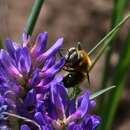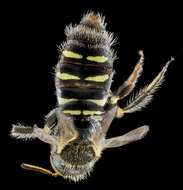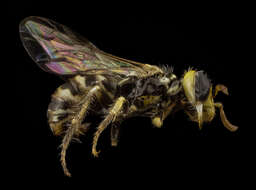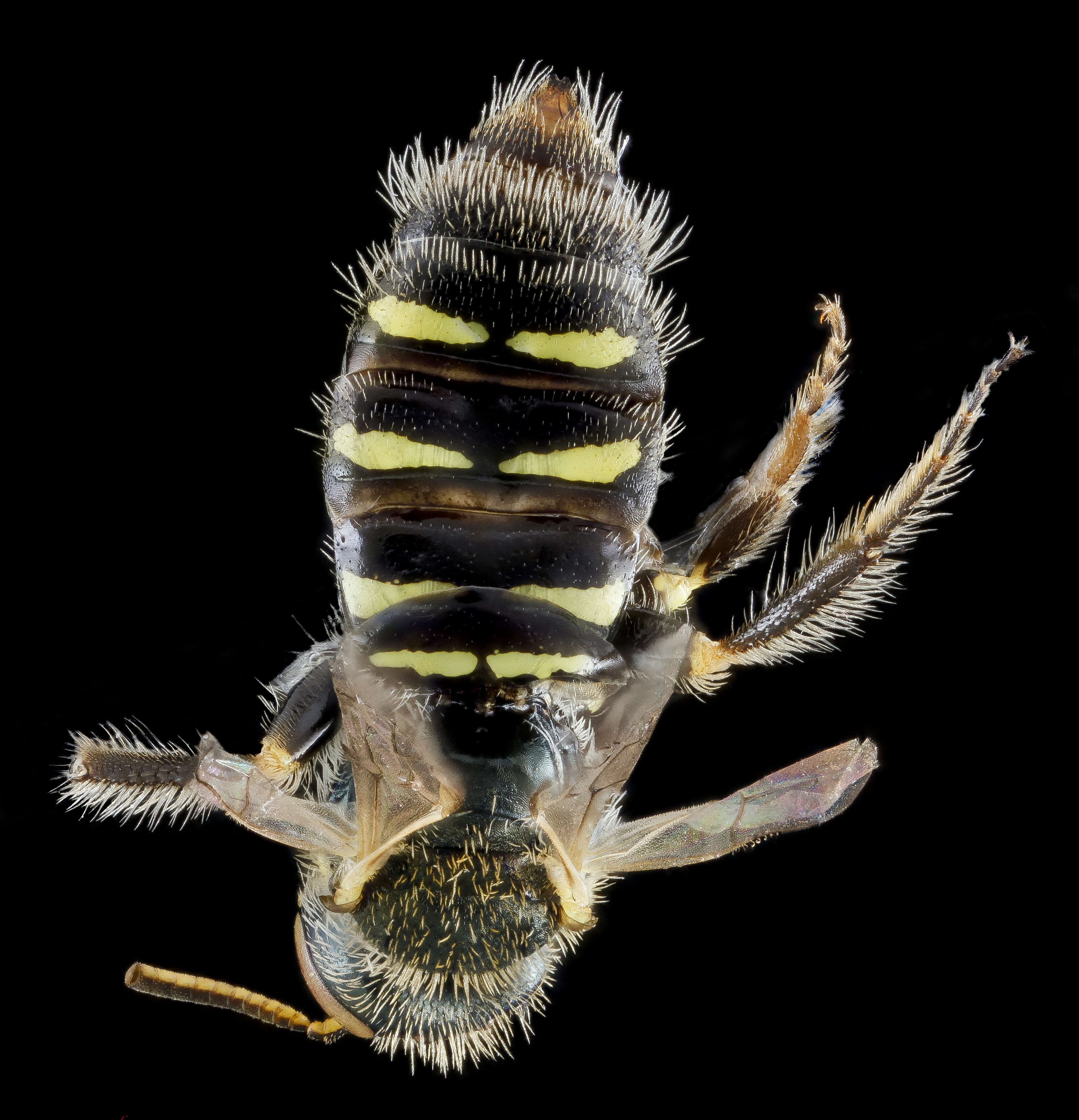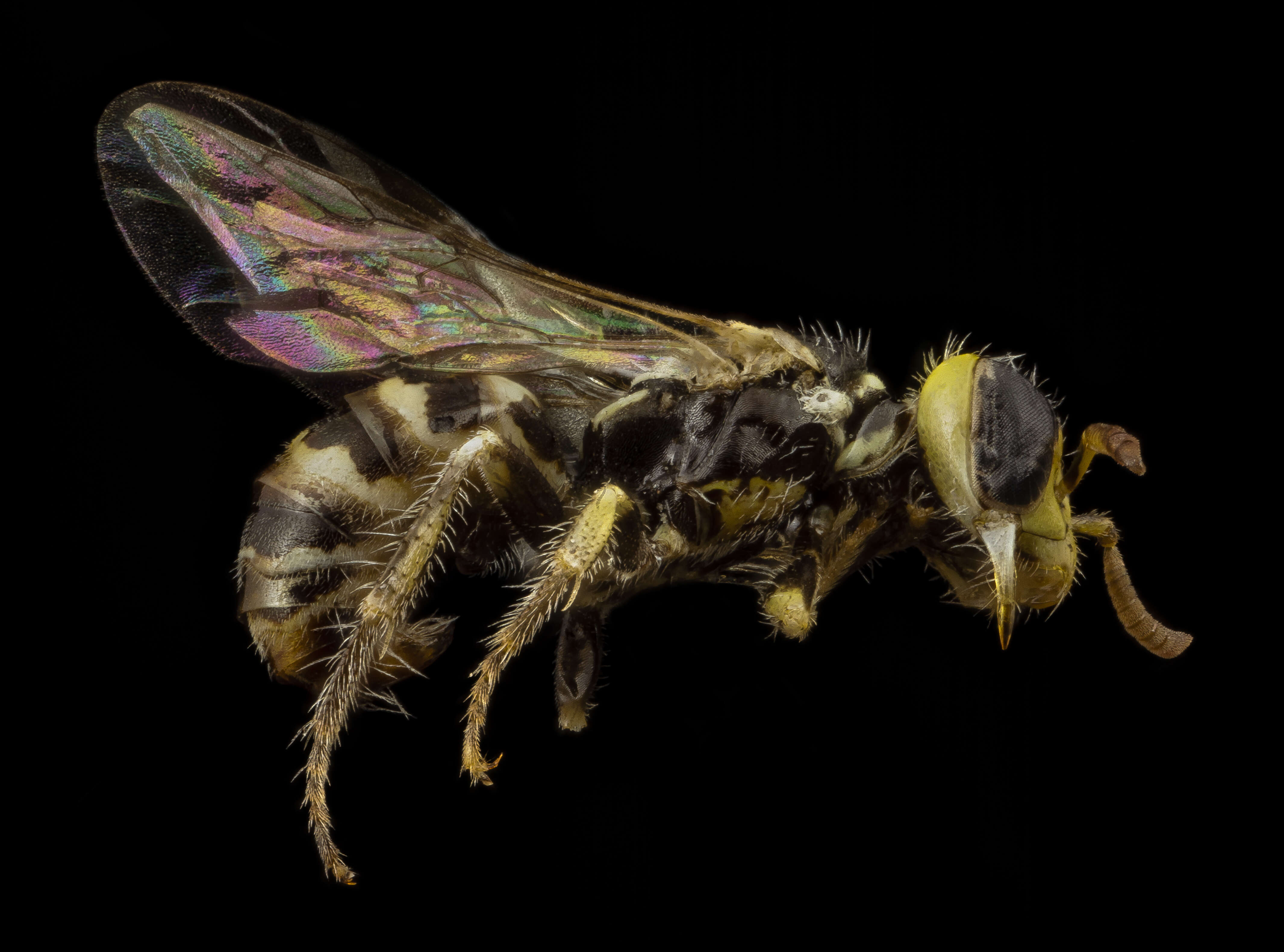Description: Southern South America is where you will find this as yet another group of relatively little studied bees. This one collected in Peru by the Packer lab and has some nice Wing Interference Pop. 17:09, 17 November 2014 (UTC)17:09, 17 November 2014 (UTC){{{{{{0}}}}}}17:09, 17 November 2014 (UTC)17:09, 17 November 2014 (UTC) All photographs are public domain, feel free to download and use as you wish. Photography Information: Canon Mark II 5D, Zerene Stacker, Stackshot Sled, 65mm Canon MP-E 1-5X macro lens, Twin Macro Flash in Styrofoam Cooler, F5.0, ISO 100, Shutter Speed 200 The murmuring of bees has ceased; But murmuring of some Posterior, prophetic, Has simultaneous come,-- The lower metres of the year, When nature's laugh is done,-- The Revelations of the book Whose Genesis is June. -Emily Dickinson Want some Useful Links to the Techniques We Use? Well now here you go Citizen: Basic USGSBIML set up:
www.youtube.com/watch?v=S-_yvIsucOY USGSBIML Photoshopping Technique: Note that we now have added using the burn tool at 50% opacity set to shadows to clean up the halos that bleed into the black background from "hot" color sections of the picture.
www.youtube.com/watch?v=Bdmx_8zqvN4 PDF of Basic USGSBIML Photography Set Up:
ftp://ftpext.usgs.gov/pub/er/md/laurel/Droege/How%20to%20Take%20MacroPhotographs%20of%20Insects%20BIML%20Lab2.pdf Google Hangout Demonstration of Techniques:
plus.google.com/events/c5569losvskrv2nu606ltof8odo or
www.youtube.com/watch?v=4c15neFttoU Excellent Technical Form on Stacking:
www.photomacrography.net/ Contact information: Sam Droege sdroege@usgs.gov 301 497 5840. Date: 13 August 2014, 16:59. Source:
Callonychium species, m, side, peru_2014-08-04-17.34.55 ZS PMax. Author:
USGS Bee Inventory and Monitoring Lab from Beltsville, Maryland, USA.

